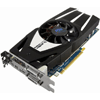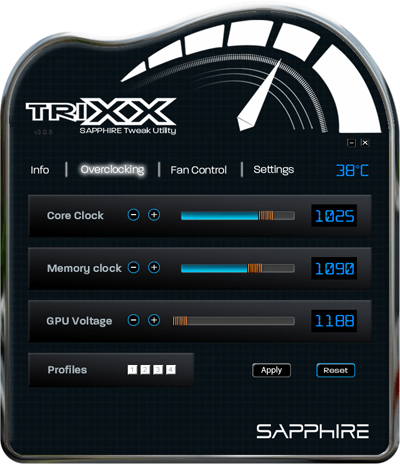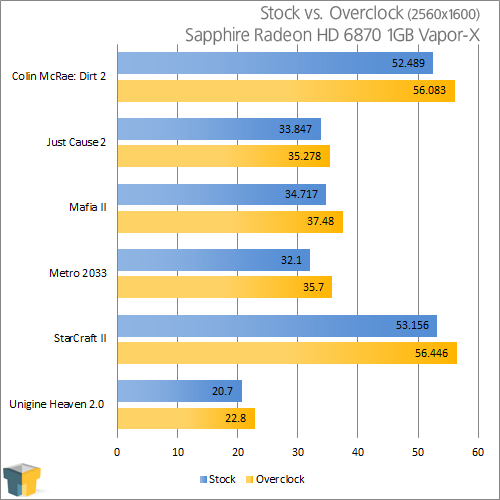- Qualcomm Launches Snapdragon 4 Gen 2 Mobile Platform
- AMD Launches Ryzen PRO 7000 Series Mobile & Desktop Platform
- Intel Launches Sleek Single-Slot Arc Pro A60 Workstation Graphics Card
- NVIDIA Announces Latest Ada Lovelace Additions: GeForce RTX 4060 Ti & RTX 4060
- Maxon Redshift With AMD Radeon GPU Rendering Support Now Available
Sapphire Radeon HD 6870 Vapor-X

Sapphire’s Vapor-X series of graphics cards have long been praised for their ability to deliver superb cooling with the help of an efficient cooler, and not surprisingly, the HD 6800 series isn’t without such a model. We’re taking a look at the company’s Radeon HD 6870 1GB variant, and see if its $10 price premium is worthy.
Page 11 – Overclocking Sapphire’s Radeon HD 6870 Vapor-X
Before tackling our overclocking results, let’s first clear up what we consider to be a real overclock and how we go about achieving it. If you read our processor reviews, you might already be aware that we don’t care too much for an unstable overclock. It might look good on paper, but if it’s not stable, then it won’t be used. Very few people purchase a new GPU for the sole purpose of finding the maximum overclock, which is why we focus on finding what’s stable and usable.
To find the max stable overclock on an AMD card, we stick to using the overclocking software included with the card, or at worst, AMD’s OverDrive tool. For NVIDIA, we use EVGA’s Precision, which allows us to reach heights that are in no way sane – a good thing.
Once we find what we believe might be a stable overclock, the card is put through 30 minutes of torture with the help of OCCT 3.0’s GPU stress-test, which we find to push any graphics card harder than any other stress-tester we’ve ever used. If the card passes there, we then further verify by running the card through a 2x run of 3DMark Vantage’s Extreme setting. Finally, games are quickly loaded and tested out to assure we haven’t introduced any side-effects.
If all these tests pass without issue, we consider the overclock to be stable.
Overclocking Sapphire’s Radeon HD 6870 Vapor-X
The reference clocks for the Radeon HD 6870 are 900MHz on the core and 1050MHz on the memory, while the Vapor-X card sticks to those. To overclock, I used Sapphire’s own TriXX tool, as AMD’s own OverDrive tool proved too limiting.
Because I wasn’t able to increase the voltage (the tool didn’t allow it), the top “stable” overclocked proved to be 1025MHz on the core and 1090MHz on the memory. This results in a fairly impressive boost for the core, and one a bit better than expected on the memory.


Given that our overall clock increase wasn’t major, the end results reflect that. Whether such gains are worth an overclock at all are for you to decide.
Support our efforts! With ad revenue at an all-time low for written websites, we're relying more than ever on reader support to help us continue putting so much effort into this type of content. You can support us by becoming a Patron, or by using our Amazon shopping affiliate links listed through our articles. Thanks for your support!





